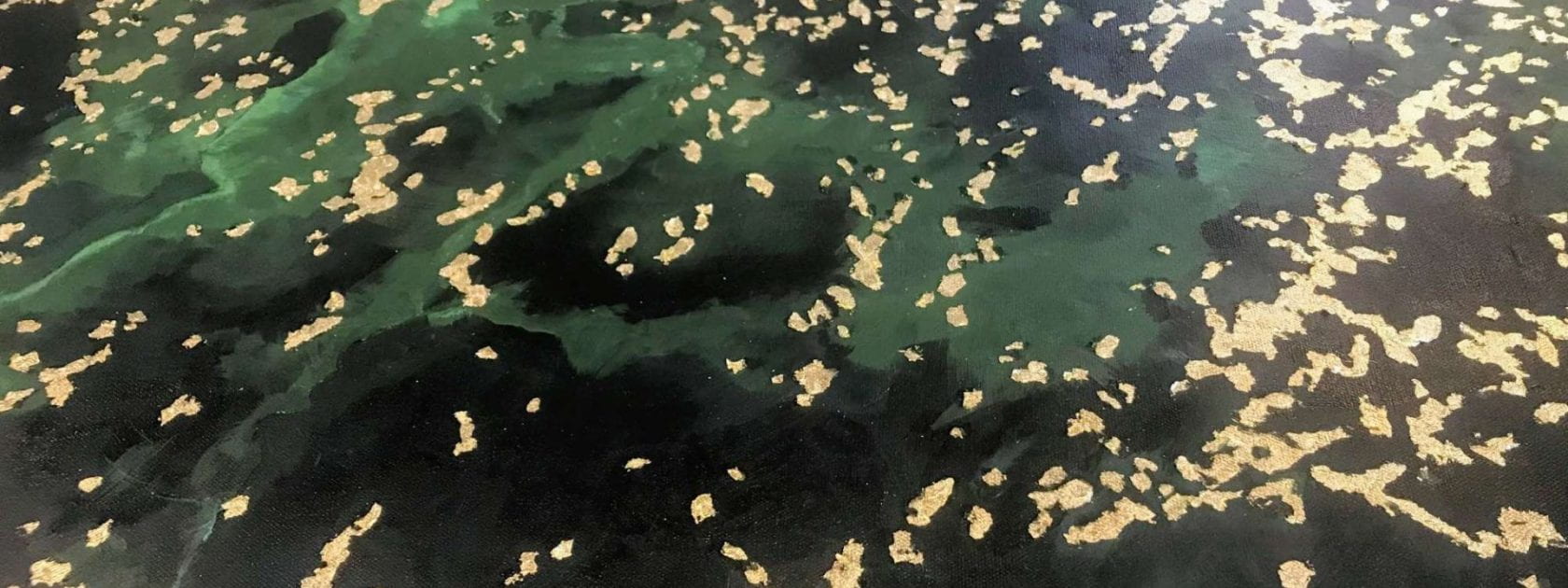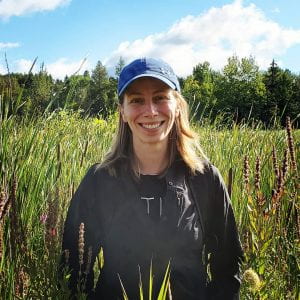By Hayley Brackenridge
Natural landscapes provide ecosystem services that are vital to human wellbeing, including temperature regulation, carbon sequestration, and water purification, as well as non-material services such as inspiration, physical and psychological experiences, and learning (reviewed by Garibaldi et al. 2020). Working landscapes (i.e., agroecosystems) are expanding and becoming increasingly homogenous (Kremen and Merenlender 2018). As a result, the protection and restoration of natural landscapes, such as forests and wetlands, is imperative to maintain the ecosystem services they provide.
“Patches of natural vegetation, even at smaller scales, can provide important benefits to humans”
Dr. Milena Rosenfield
When properly managed, working landscapes can maintain the biodiversity required to sustain ecosystem services (Garibaldi et al. 2020). A way to accomplish this is to incorporate and conserve patches of natural habitat within agroecological mosaics: landscapes that contain patches of both productive and natural areas. The multifunctionality of these agroecological mosaics can complement conservation efforts in natural protected areas to increase overall landscape resiliency to anthropogenic change (Kremen and Merenlender 2018).
At the University of Guelph, postdoctoral researcher Dr. Milena Rosenfield is investigating the role of natural habitats in providing ecosystem services in agroecological mosaics in Ontario. This research is framed within Dr. Madhur Anand‘s Food from Thought project titled “Modelling And Monitoring Agro-Ecological Mosaic Ecosystem Sustainability.” Rosenfield’s work shows that, in agroecosystems, “having patches of natural vegetation, even at smaller scales, can provide important benefits to humans that are often taken for granted.” Rosenfield says the implications of her research “should be accounted for in landscape planning and land use conversion.” Currently, there are no existing policies supporting natural land conservation in landscape planning in Ontario; however, grassroots organizations and social movements are demanding changes to government policies to facilitate conservation and sustainability of natural landscapes.
Community-driven initiatives are powerful drivers of change. Rosenfield acknowledges that effective research knowledge mobilization to the public is important for raising awareness and inspiring change. In occasion of the GIER and Food from Thought-funded arts-based knowledge mobilization project, Rosenfield collaborated with Jon MacMull, Senior Manager, Marketing and Communications at Credit Valley Conservation, a community-based environmental organization dedicated to protecting, restoring and managing the natural resources of the Credit River Watershed. The CVC has been collaborating with Rosenfield and Anand for some years to enhance conservation efforts in the area. The team was completed by Liane Miedema Brown, an emerging artist who uses a variety of mediums (from acrylic, encaustic, ink and watercolour to digital art) to explore the interwovenness of the natural world and the human role within it.
With the input of Rosenfield and MacMull, Miedema Brown created a series of immersive paintings of forests and wetlands of the Credit River Watershed to express the value, beauty, and resilience of these landscapes. Using visual art as a medium, this series creatively showcases the work that the CVC and Rosenfield have been doing to protect forests and wetlands within the Credit Valley Watershed. The team hopes that these paintings will act as a new way to show citizens the significance of natural spaces in the context of the wider landscape. MacMull has organized for the pieces to be displayed at the CVC for park visitors to view and learn more about ecosystem services and working landscapes. As well, there will be a digital unveiling of the paintings in July at cvc.ca.




Paintings of CVC natural areas at different scales. Left: Caledon Lake Forest, general view (above) and detail (below). Right: Watershed showing the patchiness of agroecological mosaics, general view (above) and detail (below).


Painting of the Warwick Forest Conservation Area: forest interior (left) and tree up close (right).
Collaborating with an interdisciplinary team helped Rosenfield effectively share her research with the community. She admits, “The language that we use in academia is quite different, and the more specific and theoretical your research is, the more difficult it is to communicate with society.” As a team, they determined a visual art piece would be the best way to translate the research findings to the public. “I would have never thought of doing this on my own”, says Rosenfield. Working with MacMull and Miedema Brown reinforced Rosenfield’s value of interdisciplinary research. She says, the experience solidified her belief that “we can merge disciplines that seem to have nothing in common to create something meaningful.”



The team: Dr. Milena Rosenfield (left), Liane Miedema Brown (centre), and Jon MacMull (right).
References:
- Garibaldi, L.A., F.J. Oddi, F.E. Miguez, I. Bartomeus, M.C. Orr, E.G. Jobbagy, C. Kremen, L.A. Shulte, A.C. Hughes, C. Bagnato, G. Abramson, P. Bridgewater, D. Gomez Carella, S. Diaz, L.V. Dicks, E.C. Ellis, M. Goldenberg, C.A. Huaylla, M. Kuperman, H. Locke, Z. Mehrabi, F. Santibanez, and C.D. Zhu. 2020. Working landscapes need at least 20% native habitat. Conservation Letters 12773.
- Kremen, C., and A.M. Merenlender. 2018. Landscapes that work for biodiversity and people. Science 362:eaau6020.
Banner photo credit: Liane Miedema Brown.




